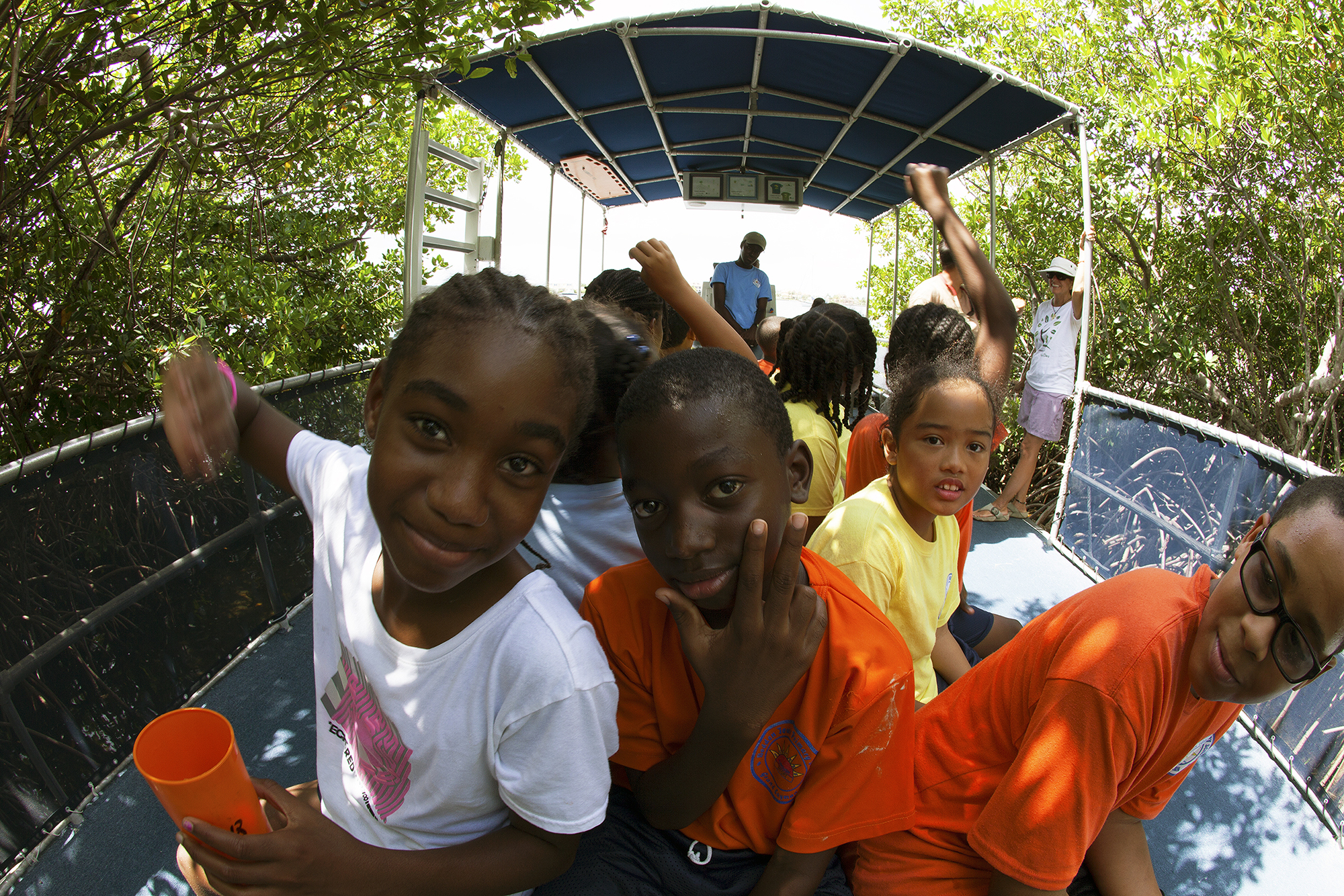Marvellous Mangroves comes to Mexico
The Mangrove Action Project’s science-based environmental education program, Marvellous Mangroves, has just been introduced to Mexico for the first time with partner RestauracionConservacion Ambiental (RECAMB) providing mangove education for small and vulnerable communities on the country’s west coast. This makes Mexico the sixteenth country to adopt the program since it was started in 2001 in the Cayman Islands.
“We are working to open eyes, hearts and minds of children and teens to a second look at mangroves near the local community and witness the Topolobampo port industrialisation,” explains RECAMB’s excutive director Maraiana Lazcano-Ferrat.
Working in conjunction with MAP’s education director, Martin Keeley, RECAMB adapted the Spanish version of Marvellous Mangroves for use in the program, which was funded by Bonanatti, a specialty port construction company.
Taking part in the week long the environmental education workhop were a total of 108 teens and children aged from 6 to 19 years old who live in Topolobampo Port. The port is located within the Ramsar site Sistema Lagunar Bahia Santa Maria-Topolobampo-Ohuira, reports Ms. Lazcano-Ferrat.
“This beautiful area is the ninth of 28 of Mexico’s most productive wetlands,” says Ms. Lazcano-Ferrat. The area includes 22,500 hectares of the mangrove ecosystem and, together with its coastal surroundings, is a target area for heaavy industrialisartion to provide the Mexican state of Sinaloa with fossil fuel produced energy, primary agricultural fertilisation products and shipping cargo services, she reports.
Ms. Lazcano-Ferrat explains that the Topolobampo community comprises mainly fishing families with complex social dynamics. “Incredible as it seems, the Ramsar site has no management plan yet published by the Mexican Ministry of Natural Resources (SEMARNAT),” she says. “So working with children and young adults to open their eyes, minds and hearts to the ecological importance of the environment will ensure that they recognise the true value of their surroundings.
“It is vital that they are able to recognise their future options on how the community must be managed,” she adds, “and question potential industialisation in the near future, setting limits to the development of the huge industry they will now have as neighbours.”
MAP’s education director, Martin Keeley, says he’s delighted that the community has been exposed to Marvellous Mangroves through its hands-on science-based activities and field explorations, especially in this time of Covid. “The constant threats to mangroves worldwide from indusrialisation of this kind, as well as commercial and tourist-based development, needs to be seriously addressed to stop the destruction of these essential ecosystems. It’s great that Ms. Lazcano-Ferrat has been able to introduce Marvellous Mangroves to the Topolobampo community, even with their very limited resources,” he adds.
Mr. Keeley stresses the need for additional funding to ensure that the project is continued well into the future and expands regionally.
“The new generation needs to have science-based education programs like Marvellous Mangroves which expose them to the value of the local ecosystems that they rely on for their health and well-being,” Ms. Lazcano-Ferrat says. “Teenagers are eager to work for the industry that is arriving at the port and see the development of the coast with their eyes on a a better future with many oportunities. RECAMB wants to invite them to open their minds and hearts to instantly recognise their natural environment and its ecological value. This way they can particicipate in its conservation in the face of near unstoppable industrialisation which is coming to the port.”
FIG. 1A
FIG. 1 B
A. Understanding the importance of designing a logbook for registering scientific data.
B. Learning jow to handle binoculars and birdwatching basics for kids.
C. Recognising the species of birds associated with mangrove areas and coastlines – registering all observations.
FIG. 1C
FIG. 2. The activities held in the protected area on the island of Las Animas inside the Ramsar site #2025. These are a combination of outdoor games and activities from Marvellous Mangroves which stress the services and values of wetlands which the children have taken for granted all their lives witout noticing how closely these are linked to their own quality of life
FIG. 3. Microscopic observation of the structure of feathers – one of the activities in Marvellous Mangroves – in microscopes provided by MAP. “This is all about giving children exposure to and opening their minds to the elements of their surroundings – giving them an understanding that science and technology are nature inspired,” observes Ms. Lazcano-Ferrat.
FIG. 4.
“Exploring the mangrove canals with kayaks as an educational activity is an invigorating and breathtaking activity,” observes Ms. Lazcano-Ferrat. “This allows the natural beuty of the flora and fauna to make their own impact and leads to future discussiion about the alternatives of sustainable economic activities within a protected area.”
FIG. 5. “Sometimes, being in nature beomes and experience that teaches collateral lessons,” observes Ms. Lazcano-Ferrat. “We have seen how the perceptions and character of young adults are challenged, and the need of social skills as well as knowledge of technology becomes clear when addressing common goals.”
FIG. G: Lagunas de Santa-Maria Topolobambo-Ohuira. 02/02/09: World Heritage site & UNESCO Biosphere Reserve. A system of three coastal lagoons witgh a total eight islands – six in Ohuira Bay, one in Topolobambo Bay and one in Santa Maria Bay. Manrgove species include: Rhitzophra Mangle, Laguna Racemosa, Avicenna Germinans and Conoparpus Erectus. The site is home to 84% of Mexican migratory waterfowl during the winter months. Fishing is the most important human use of the area. The site lies within the protected area of Islas Del Golfo De California, a World Heritage Natural site and UNESCO Biosphere Reserve, Ramsar site No. 2025.

